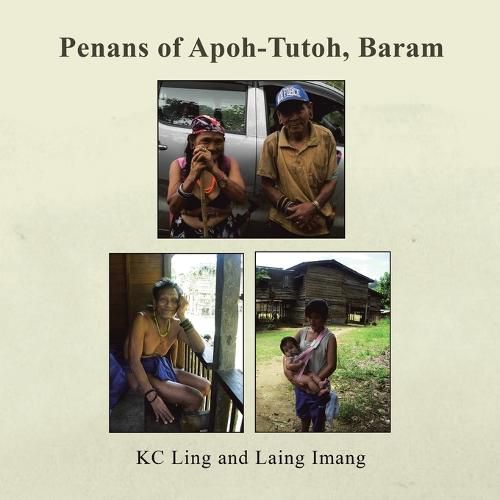Readings Newsletter
Become a Readings Member to make your shopping experience even easier.
Sign in or sign up for free!
You’re not far away from qualifying for FREE standard shipping within Australia
You’ve qualified for FREE standard shipping within Australia
The cart is loading…






This title is printed to order. This book may have been self-published. If so, we cannot guarantee the quality of the content. In the main most books will have gone through the editing process however some may not. We therefore suggest that you be aware of this before ordering this book. If in doubt check either the author or publisher’s details as we are unable to accept any returns unless they are faulty. Please contact us if you have any questions.
Sarawak has a very diverse population comprising of many races and ethnic groups. Among the ethnic groups, the Orang Ulu (meaning upriver people) include the major Kayan and Kenyah, and the minor group like the Penans. The Penans are the original nomadic people; some of them still maintain the lifestyle of hunter and gatherer. The narration of this book is not meant to be an anthropological study of the Penans of Apoh-Tutoh, Baram. The subjects are more of general interest to common people as they are a mix of historical events recalled by the elders, storytelling and tall tales. It started with the Penan settlements at Lapok, Tinjar and the migration to Apoh-Tutoh. The role of the Penans as proxy warriors in the Kayan-Berawan tribal wars was explored as continued with the history of head hunting and Baram Regatta. The White Rajahs and their punitive expeditions (Lang, Sadok and Kayan) against the Sea Dayak of Saribas and Skrang, Rentap, the Kayans of Rajang and peace making are described to give perspective to the Baram Regatta and peace-making ceremony. However, there is increasing number of the Penans who have abandoned the nomadic lifestyle for settlements in longhouses. Hence, the Penans face the dilemma of a semi-settled lifestyle and changes due to development such as disappearing cultural heritage (sign sticks "oroo" and traditional dance "saryau titut"), lost generation (school dropouts, teenage mother, marriage with outsiders, sexual violence and exploitation and alcoholism), forestry issues and the disappearing Penan Landscape ("Tana' Pengurip Penan").
$9.00 standard shipping within Australia
FREE standard shipping within Australia for orders over $100.00
Express & International shipping calculated at checkout
This title is printed to order. This book may have been self-published. If so, we cannot guarantee the quality of the content. In the main most books will have gone through the editing process however some may not. We therefore suggest that you be aware of this before ordering this book. If in doubt check either the author or publisher’s details as we are unable to accept any returns unless they are faulty. Please contact us if you have any questions.
Sarawak has a very diverse population comprising of many races and ethnic groups. Among the ethnic groups, the Orang Ulu (meaning upriver people) include the major Kayan and Kenyah, and the minor group like the Penans. The Penans are the original nomadic people; some of them still maintain the lifestyle of hunter and gatherer. The narration of this book is not meant to be an anthropological study of the Penans of Apoh-Tutoh, Baram. The subjects are more of general interest to common people as they are a mix of historical events recalled by the elders, storytelling and tall tales. It started with the Penan settlements at Lapok, Tinjar and the migration to Apoh-Tutoh. The role of the Penans as proxy warriors in the Kayan-Berawan tribal wars was explored as continued with the history of head hunting and Baram Regatta. The White Rajahs and their punitive expeditions (Lang, Sadok and Kayan) against the Sea Dayak of Saribas and Skrang, Rentap, the Kayans of Rajang and peace making are described to give perspective to the Baram Regatta and peace-making ceremony. However, there is increasing number of the Penans who have abandoned the nomadic lifestyle for settlements in longhouses. Hence, the Penans face the dilemma of a semi-settled lifestyle and changes due to development such as disappearing cultural heritage (sign sticks "oroo" and traditional dance "saryau titut"), lost generation (school dropouts, teenage mother, marriage with outsiders, sexual violence and exploitation and alcoholism), forestry issues and the disappearing Penan Landscape ("Tana' Pengurip Penan").